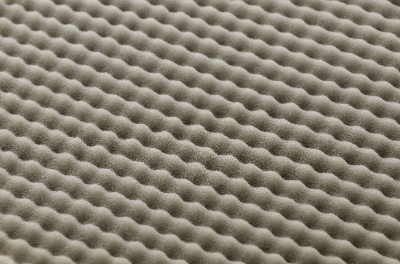What Is Urethane Foam?
 Urethane Foam (formal name: polyurethane) is a polymer containing urethane bonds, which is obtained by mixing and reacting two main raw materials.
Urethane Foam (formal name: polyurethane) is a polymer containing urethane bonds, which is obtained by mixing and reacting two main raw materials.
It is widely used in various applications depending on the blending of the main raw materials and the molding method, and can be classified into foamed foam products (hereinafter referred to as Urethane Foam) and non-foamed products.
Foamed foam products and non-foamed products are broadly classified. Urethane Foam is classified into soft and hard, depending on the application. Non-urethane foam products range from soft and flexible like rubber to tough and resilient like those used in tires.
Uses of Urethane Foam
Among urethane foam products, soft urethane foam is the most commonly seen product used in everyday items such as cushions, sofas, and other furniture, bedding, clothing, and daily necessities.
Rigid Urethane Foam is also used in a wide range of industrial products such as building materials as a heat insulator and sound absorber due to its excellent heat insulation properties, lightness, and ease of molding. Both flexible and rigid foams can be molded at will, making it possible to create parts with a high level of design.
Non-form products, on the other hand, are used as raw materials for tires, tubes, and rollers. In addition, urethane is used in a wide variety of fields, such as paints and waterproofing materials that take advantage of its high weather resistance and waterproofing properties, as well as textiles and synthetic leathers.
Principle of Urethane Foam
The raw materials, polyisocyanate and polyol, form polymers by urethane bonding, and the type and additives are selected to produce urethane foam according to the purpose.
Polyisocyanate is a compound that has two or more isocyanate groups in one molecule. Typical examples are toluene diisocyanate (TDI) and diphenylmethane diisocyanate (MDI).
These polyisocyanates react with polyols having two or more hydroxyl groups in a single molecule to form urethane foam bonds. If a cross-linking agent is added as needed, burette and allophanate bonds can be formed. The elasticity varies depending on the density of the crosslink, with higher density resulting in harder properties.
Types of Urethane Foam
Urethane Foam and non-foam product forms are available.
1. Urethane Foam
Urethane Foam includes soft urethane foam, hard urethane foam, and semi-hard urethane foam, which has characteristics in between the two. Both types are manufactured by adding catalysts, blowing agents, foaming agents, and flame retardants to the raw materials polyisocyanate and polyol.
Flexible Urethane Foam
The foam of flexible urethane foam is produced by carbon dioxide gas generated during mixing and reaction of isocyanate and polyol, and is a continuous series of bubbles. The foam is soft, cushiony, and resilient, and is used in cushions and sofas, as mentioned above.
Rigid Urethane Foam
In rigid urethane foam, the foaming agent is vaporized by the reaction heat of isocyanate and polyol, in addition to stirring and mixing, and each foam in rigid urethane foam is a small independent foam. Each independent foam of rigid urethane foam is filled with gas derived from the blowing agent, thus achieving a high thermal insulation effect.
For this reason, as mentioned earlier, it is used as a building material for heat insulation and sound absorption. Since the curing reaction proceeds quickly, the raw materials are often mixed and sprayed at the work site to produce a foam form.
Semi-Rigid Urethane Foam
Semi-hard Urethane Foam is a material with hardness somewhere between that of soft urethane foam and hard urethane foam. It is characterized by high resilience and high elasticity and is used in mattresses.
2. Non-Foam
There are two types of non-foam materials: thermosetting and thermoplastic.
Thermosetting ones are used in car and motorcycle tires, while thermoplastic ones are used as materials for molded items such as car bumpers and synthetic leather. Other uses include paints, elastic fibers, adhesives, and waterproofing materials.
How to Select Urethane Foam
When selecting urethane foam, it is important to confirm the following points:
1. Airtightness
Rigid urethane foam used as a construction material is easy to cut, but if you make a mistake when filling a wall, there is a possibility that there will be a gap. Depending on the level of the installer, airtightness may be low, so it is important to confirm that airtightness can be secured.
2. Flammability
Urethane foam itself is highly flammable. As mentioned above, fire-retardant gypsum board is generally applied on top of the urethane foam, so it is not likely to catch fire directly. However, if fire is a concern, it is safer to use rock wool or similar materials.
3. Safety
There is a disease called “sick building syndrome,” which has become common nowadays. This is a symptom of allergic reactions caused by toxic gases emitted from building materials used.